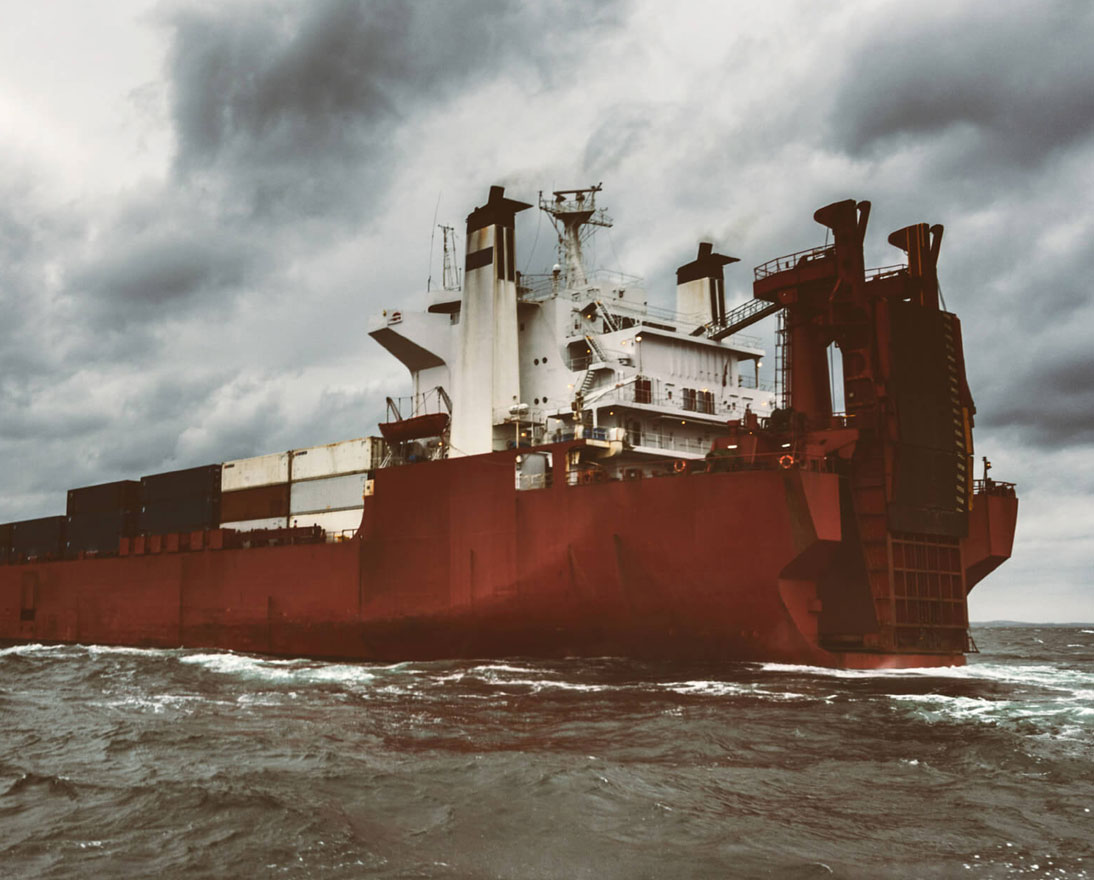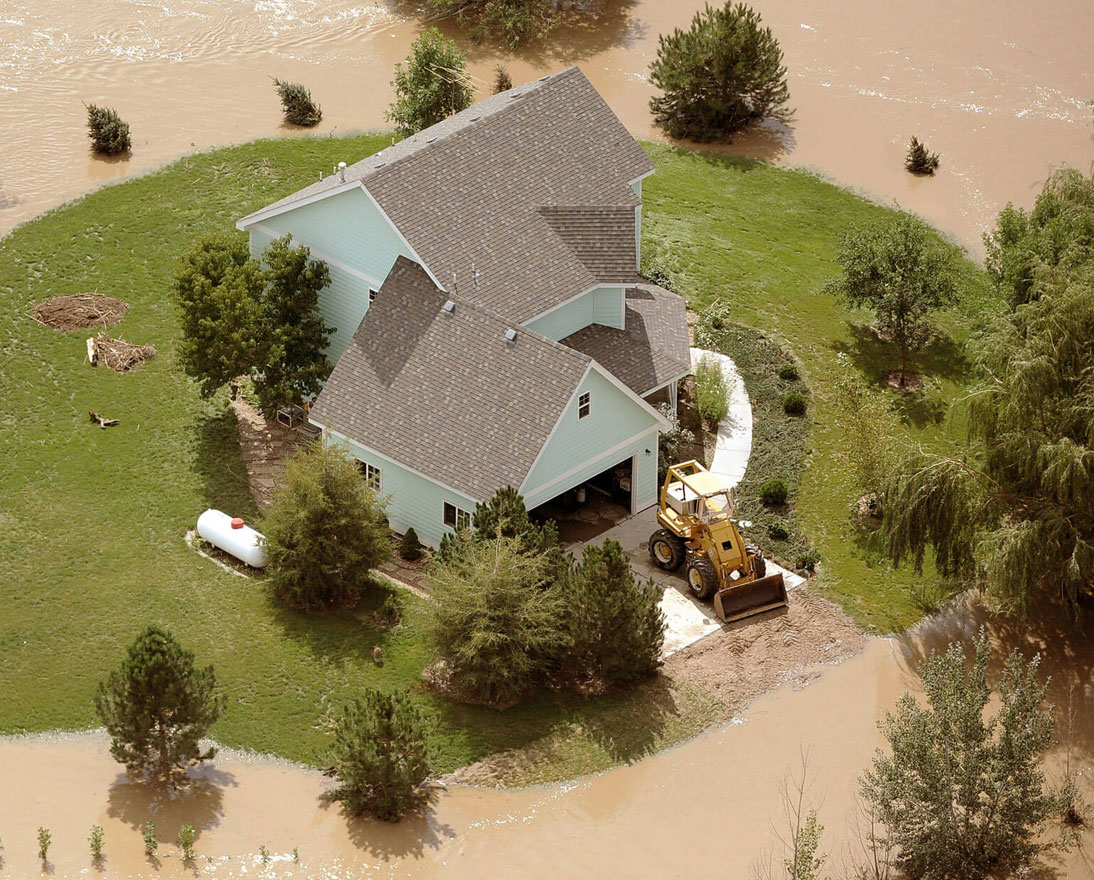Extreme weather events intensify economic and social risks
Natural hazardsArticleJune 6, 2018
Corporate sustainability teams could play an important role in building resilience to environmental risks.
It used to be simpler for executives to evaluate their risk landscape, whose perimeter was often defined by a narrow location or industry. Today that risk assessment must be as global and interconnected as the economy in which a company competes—a daunting task at a time when risks are more complex and volatile than ever before.
According to the World Economic Forum’s Global Risks Report 2018, three of the top five threats in terms of likelihood are environmental: extreme weather, natural disasters and the failure of climate change mitigation. Among the greatest risks in terms of potential impact, those three are surpassed only by weapons of mass destruction.
The reason for the seismic potential of these environmental risks isn't just the risks themselves, but also their knock-on effects. In a global economy, every corporate executive has to consider the potential for cascading risks to threaten the systems that underpin our economy and society.
Scenario planning can help identify the impact beyond the direct hit.
Eugenie Molyneux, Chief Risk Officer for Commercial Insurance, Zurich Insurance Group
Geographic distance is a flimsy bulwark against the many risks that follow climate-related disasters. Environmental calamities can exacerbate economic and social problems, leading to water and food crises, large-scale involuntary migration, interstate conflict, severe social instability and even the collapse of regional governments. Just one of those outcomes can have profound implications for commerce, yet most businesses have not built enough resilience to these risks.
“We've seen wars fought over resources in the past. Should a weather-related event cause a problem with food or water supplies, it's not beyond the realm of possibility that we would see conflict arise over the remaining food and water,” says Eugenie Molyneux, Chief Risk Officer for Commercial Insurance at Zurich Insurance Group. “That's where migration may come in—and the locations where climate change is most likely to have a significant impact are some of the more populous locations in the world.”
Molyneux points to Puerto Rico, where Hurricane Maria devastated much of the infrastructure in September 2017, raising fears that many residents would have to relocate. “We're talking hundreds of thousands of people. What if it's millions of people?” she asks. “Let's say we have an extreme weather-related event. It triggers mass migration of such a scale that it leads to a border conflict. A war in today's world might not be fought with arms. It might be fought via cyberattack. One of the things we note in the Global Risks Report is that you might see countries essentially fight a war over the internet.”
This dystopian fantasy might easily be dismissed by companies focused on more immediate, tangible risks. However, some political observers have identified mass migration from the Middle East (and rising nationalist sentiment in response) as a key factor that fueled the Brexit vote in the U.K. two years ago, which upended the entire economic landscape of the European Union.
“It comes back to the supply chain or the value chain. And by that, I'm talking in holistic terms—your customer supplies and your own facilities, wherever they are,” says Nick Wildgoose, Zurich’s Global Supply Chain Product Leader. “You should be monitoring the country risk, particularly where there are significant value flows at risk.”
Building resilience to the potential impact of distant and disparate events is a formidable exercise for an executive team. Formidable, but possible.
It comes back to the supply chain or the value chain. You should be monitoring the country risk, particularly where there are significant value flows at risk.
Nick Wildgoose, Global Supply Chain Product Leader, Zurich Insurance Group
“Scenario planning can help identify the impact beyond the direct hit,” says Molyneux. “The more ‘What If’ scenarios you can do, the better, because it allows you to pick up the interconnectedness. You could say, ‘What if a hurricane hit X?’ Just pick a location. Instead of just capturing the cost of business downtime in that location, which is direct impact, you can also pick up the indirect impact, which is how long a community will be out of action.”
Those questions need to include what would happen if a community is rendered permanently out of action, as well, Molyneux says.
The failure to mitigate environmental risk is perilously evident today in Cape Town, South Africa’s second-largest city. After a three-year drought, “Day Zero”—when the municipal water supply will be shut off, making Cape Town the world’s first major city to run out of water—is predicted to arrive in 2019. The economic impact has already arrived: The South African agriculture industry has lost 37,000 jobs and $1.17 billion, 50,000 people have been pushed below the poverty line, food prices are climbing and severe water rationing has raised the specter of a public health catastrophe in a densely populated city of 4 million.
It wasn’t unforeseeable. Since 1995, Cape Town’s population has swelled by 79 percent, while water storage increased by a paltry 15 percent in the same period. Could scenario planning by businesses have helped alleviate the situation? Perhaps, says Molyneux.
“A business might say, ‘It's too hard for us to address the water shortage because we're not going to build a desalination plant for ourselves,’ but had they and other businesses identified that risk, then they may have been able to lobby the government for a plant,” she says. “That's why it's still important to do that exercise even if the problem can't be resolved by the company itself.”
Cape Town and Puerto Rico exemplify how public spending on disaster response dwarfs investment in preemptive risk reduction—a dangerous strategy for private industry to mirror.
“While we provide the insurance, we certainly recommend that businesses manage their risk and undertake mitigating actions,” Molyneux says. “Prevention is better than the cure. You could have insurance, but it's more critical for a business to assess how quickly they can get back online."
According to Molyneux, one of the best ways for businesses to build resilience to extreme weather events is to invest in the communities where they operate.
"The more they are tied into the local community, the more likely that, if something goes wrong, they will bounce back from it," she says. "There's an interconnection between the community’s interest and the business’s interest. If they look at those aspects of their business and their relationship with the world around them, they can build more resilience.”
That connection to a community—even to a global community or one of shared values—is increasingly significant in the modern marketplace. Business leaders and investors no longer just care about where a company does business, but also how it does business. Corporate sustainability teams could be a key resource for risk management, according to Wildgoose.
“Something increasingly on the C-suite's agenda is sustainability— corporate social responsibility,” says Wildgoose. “Clearly, that's an overlap with extreme weather: climate change potentials, the CO2 footprint, flooding. Most of your sustainability risk is arguably in your supply chain, so why not link them together?"
Building resilience against risk doesn’t guarantee success—but inaction can assure failure. And in this global economy, there is no one-size-fits-all approach.
“I can't say, ‘Here's the magic bullet. If you do this, you'll be fine,’” Molyneux says. “That will look different for each company, due to their size, dispersion and relative importance to society. Every C-suite needs to do these exercises for themselves.”
Key Takeaways:
- The reason environmental risks have become top global risks in terms of impact isn't just because of the risks themselves, but also because of their interconnected knock-on effects.
- Environmental calamities can exacerbate economic and social problems, which businesses must consider in their scenario planning.
- Public spending on disaster response dwarfs investment in preemptive risk reduction, which is a dangerous strategy for private industry to mirror.
- One of the best ways for businesses to build resilience to extreme weather events is to invest in the communities where they operate.
- Companies should consider linking their sustainability and procurement teams with their risk management teams driving the necessary transparency in supply chains to build resilience to environmental and societal risks.



